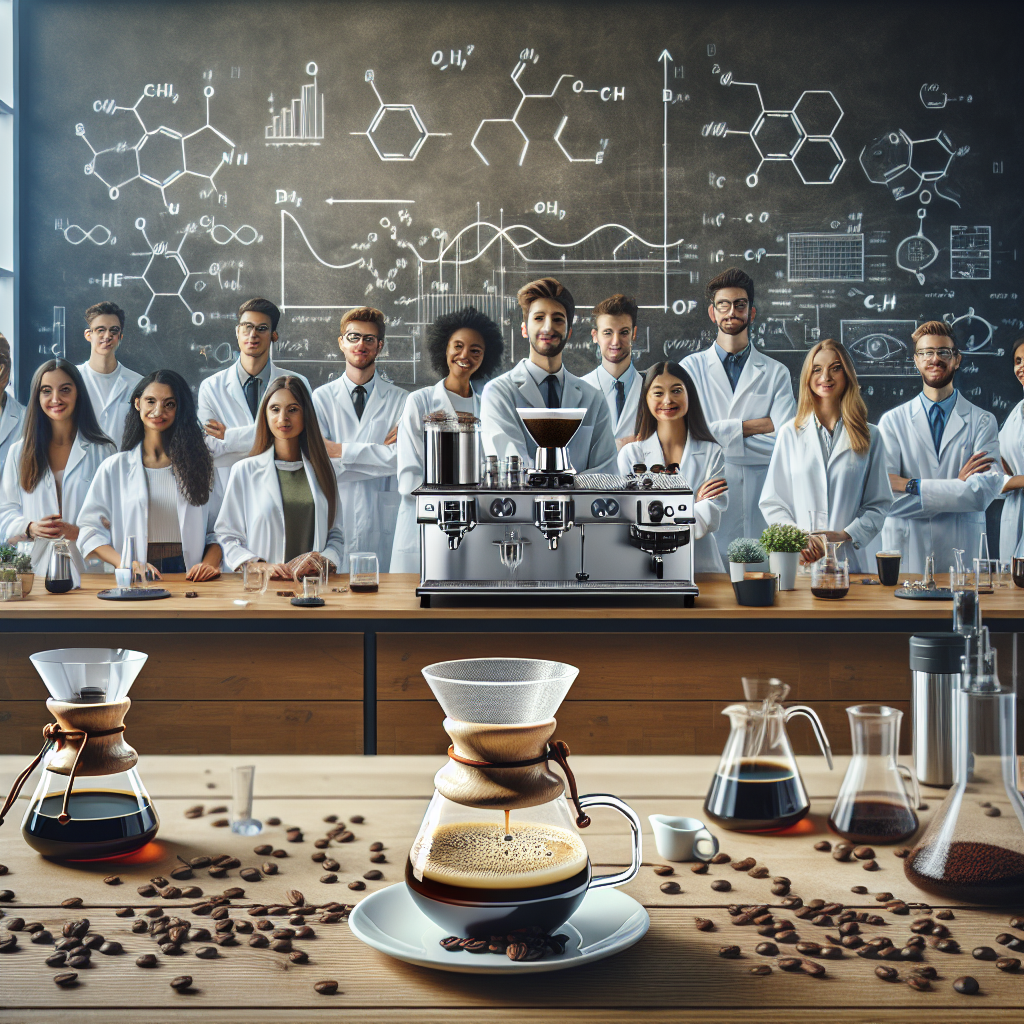
Coffee Fix: MIT Students Decode the Science Behind the Perfect Cup
Blending Science and Love for Coffee
The Massachusetts Institute of Technology (MIT) is renowned for pushing boundaries in science and innovation. True to its spirit, MIT has introduced a novel course that blends academic rigor with everyday passion: coffee. The class, titled 3.000 Coffee Matters, brings together lectures on chemistry and coffee science, coupled with hands-on projects, to unravel the mysteries of making the perfect brew.
Exploring Coffee Chemistry
Senior students Omar Orozco and Elaine Jutamulia, among others, embarked on a mission to enhance the coffee-drinking experience by experimenting with additives like anise, salt, and chili oil. Their project sought to improve taste and rectify common brewing mistakes identified during the coffee extraction process.
Hands-on Learning in MIT’s Breakerspace
Within MIT’s state-of-the-art Breakerspace, students utilized equipment such as infrared spectrometers and optical microscopes to delve deep into the chemistry of their favorite drink. This practical approach enabled students to observe coffee in new ways and form hypotheses based on real-world observations.
The Science of Brewing
The course’s popularity stems from its hands-on experiential learning model. Students like Gabi McDonald and McKenzie Dinesen, who are majors in aeronautics and astronautics, found themselves immersed in discussions about the impact of water temperature on coffee extraction and the resulting flavor profile.
Challenges and Discoveries
- Second-year student Tony Chen explored the structural impact of different decaffeination methods on coffee beans.
- Projects examined the effect of microwaving coffee to assess changes in taste and chemical composition.
- Students analyzed caffeine concentrations in diverse coffee types.
Uncovering Coffee’s Mysteries
The course served as a medium for students to bridge the gap between theoretical knowledge and practical applications. The examination of factors like elevation of coffee growth brought to light the intricate details that contribute to coffee’s unique composition and flavor.
Insights and Revelations
- Darker roasts have less caffeine compared to lighter ones, debunking common myths about coffee strength.
- Misconceptions around coffee bitterness were addressed, shedding light on its origins during the roasting process.
Coffee Experiments and Curiosity
Fueled by curiosity, students were inspired to pursue further investigation. They conducted tests using Fourier Transform Infrared (FTIR) spectroscopy to analyze coffee samples for flavor-inducing compounds.
Breaking Down Storage Myths
- Student groups questioned and tested the common belief that freezing coffee adversely affects its quality.
- Comparisons between frozen brewed coffee, frozen grounds, and whole beans provided valuable insights.
Percolating Knowledge
Jeffrey Grossman, a DMSE professor at MIT, attributes the course’s success to its ability to spark curiosity and inspire student-driven inquiry. By using playful yet scientifically rigorous explorations in the Breakerspace, students gained a richer understanding of coffee from bean to cup.
Encouraging Exploration
Each project and collaboration exemplified MIT’s commitment to providing students with the tools and guidance to transform what they learn into innovations and insights. Students walked away with more than just academic credit; they acquired a deeper appreciation for the complexities of coffee, a beverage they love. “Coffee is a complicated material,” noted Grossman, highlighting the profound ways it can be studied and enjoyed.
Source: https://news.mit.edu/2025/coffee-fix-mit-students-decode-science-behind-perfect-cup-0107


Your point of view caught my eye and was very interesting. Thanks. I have a question for you.
Your point of view caught my eye and was very interesting. Thanks. I have a question for you.